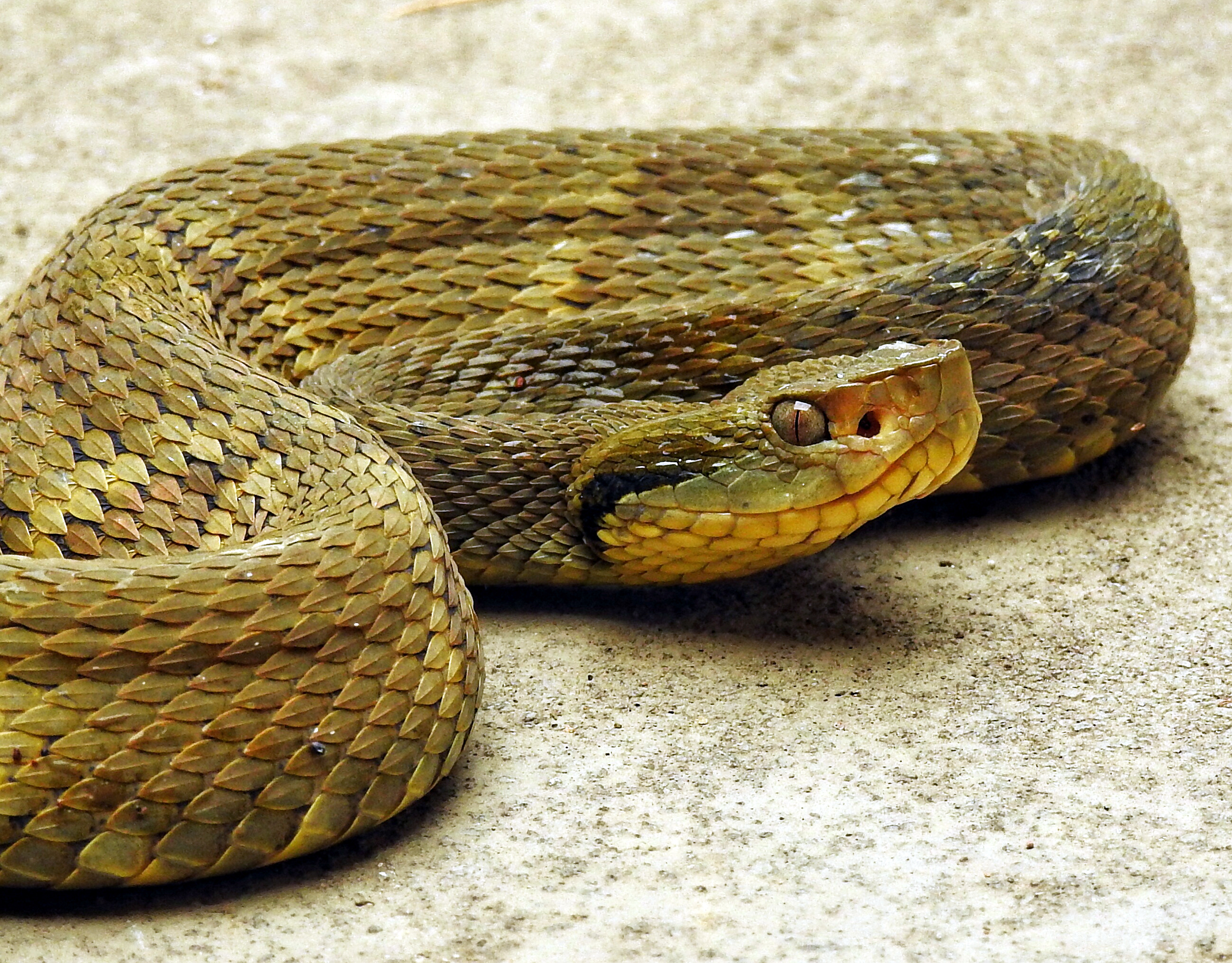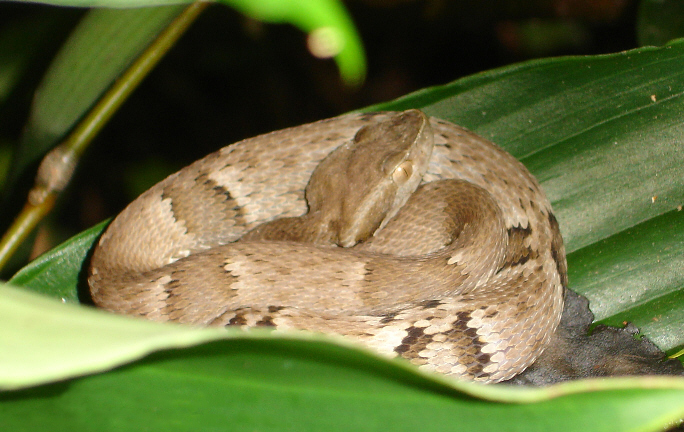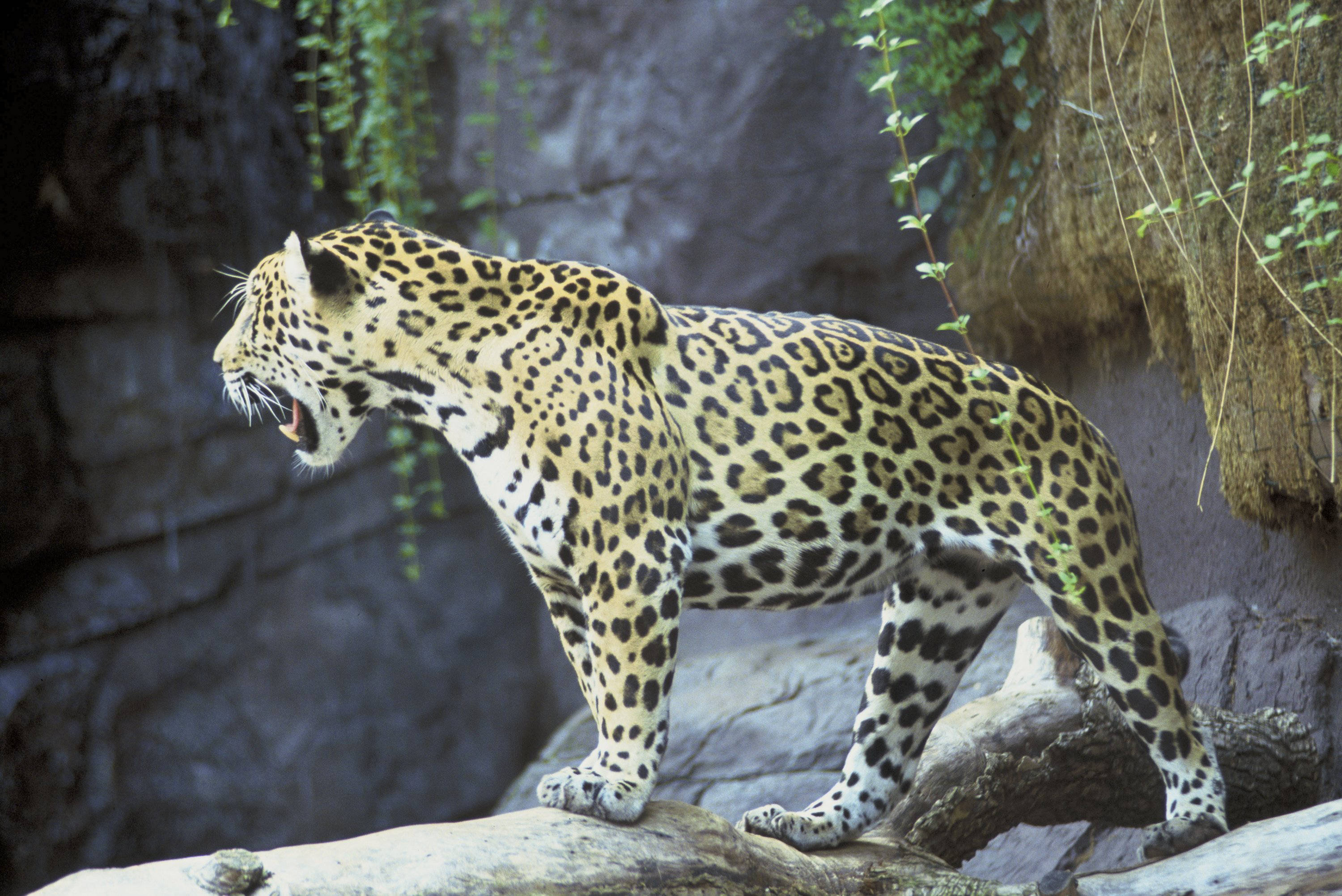|
Animal Attacks In Latin America
List of reported attacks and species involved in Latin America. Reptiles Snakes Snake bites are a major problem in Central and South America, with an estimated 70,000 cases per year. Due to underreporting, these numbers are estimated to be much higher. The main species involved in accidents are viperids, including lanceheads (Bothrops) and rattlesnakes (Crotalus). Panama records 2,000 bites every year in Central America, while Brazil records 26,000 to 29,000 per year, Brazil and Costa Rica have the highest lethality rates, 0.42% and 0.5% respectively, 70-90% of bites in Brazil are caused by lanceheads, the most important species are Bothrops asper (Mexico, Central America, North South America), Bothrops atrox (Amazon) and Bothrops jararaca (Brazil, Argentina, Paraguay), accidents by bushmasters Lachesis (genus) are rare, but mortality rate is high. Among elapids, they are represented by coral snakes (Leptomicrurus, Micrurus, Micruroides), they're responsible for only 1-2% of ac ... [...More Info...] [...Related Items...] OR: [Wikipedia] [Google] [Baidu] |
Bothrops Jararaca
''Bothrops jararaca'' — known as the ''jararaca'' or ''yarara'' — is a highly venomous pit viper species endemic to South America in southern Brazil, Paraguay, and northern Argentina. The specific name, ''jararaca'', is derived from the Tupi words and , which mean "large snake". Within its geographic range, it is often abundant and is an important cause of snakebite. No subspecies are currently recognized. The drugs known as angiotensin converting enzyme (ACE) inhibitors, used for the treatment of hypertension and some types of congestive heart failure, were developed from a peptide found in the venom of this species. Description This is a slender and terrestrial species that grows to a maximum total length of 160 cm (63 in), although the average total length is much less. The head scalation includes 5-12 intersupraoculars that are weakly keeled, 7-9 supralabials (usually 8) of which the second is fused with the prelacunal to form a lacunolabial, and 9-13 sublab ... [...More Info...] [...Related Items...] OR: [Wikipedia] [Google] [Baidu] |
Melanosuchus Niger
The black caiman (''Melanosuchus niger'') is a species of large crocodilian and is the largest species of the family Alligatoridae. It is a carnivorous reptile that lives along slow-moving rivers, lakes, seasonally flooded savannas of the Amazon basin, and in other freshwater habitats of South America. It is a large species, growing to at least and possibly up to in length, which makes it the third largest reptile in the Neotropical realm, behind the American crocodile, and the Orinoco crocodile.''Melanosuchus niger'' Black caiman Animal Diversity Web. Retrieved on 2013-04-13. As its common and scientific names imply, the black caiman has a dark coloration as an adult. In some individuals, the dark coloration can appear almost black. It has grey to brown banding on the lower jaw. Juveniles have a mo ... [...More Info...] [...Related Items...] OR: [Wikipedia] [Google] [Baidu] |
Cougar
The cougar (''Puma concolor'') is a large Felidae, cat native to the Americas. Its Species distribution, range spans from the Canadian Yukon to the southern Andes in South America and is the most widespread of any large wild terrestrial mammal in the Western Hemisphere. It is an adaptable, Generalist and specialist species, generalist species, occurring in most American habitat types. This wide range has brought it many common names, including puma, mountain lion, catamount and panther (for the Florida sub-population). It is the second-largest cat in the New World, after the jaguar (''Panthera onca''). Secretive and largely solitary by nature, the cougar is properly considered both nocturnal and crepuscular, although daytime sightings do occur. Despite its size, the cougar is more closely related to smaller felines, including the domestic cat (''Felis catus'') than to any species of the subfamily Pantherinae. The cougar is an ambush predator that pursues a wide variety of pre ... [...More Info...] [...Related Items...] OR: [Wikipedia] [Google] [Baidu] |
Chamela-Cuixmala Biosphere Reserve
The Chamela-Cuixmala Biosphere Reserve is a biosphere reserve A nature reserve (also known as a wildlife refuge, wildlife sanctuary, biosphere reserve or bioreserve, natural or nature preserve, or nature conservation area) is a protected area of importance for flora, fauna, or features of geological or o ... on the Pacific coast of the Mexican state of Jalisco. The park was founded in 1993 and covers 131.42 square kilometres in La Huerta, Jalisco, La Huerta Municipality. The land is mountainous and contains Jalisco dry forests, dry tropical forest and rolling hills and alluvial plains. Wildlife Wildlife includes the North American jaguar, jaguar, North American cougar, puma, ocelot, jaguarundi, coyote, coati, armadillo, skunk, white tailed deer, peccary, American crocodile, geckos, potoos, hawks, Kite (bird), kites, storks, vultures, Boidae, boas, Viperidae, vipers, coral snakes, toads, frogs, sea turtles, opossums, macaws, and woodpeckers. In addition, the Pacific Slope ... [...More Info...] [...Related Items...] OR: [Wikipedia] [Google] [Baidu] |
Sexually Dimorphic
Sexual dimorphism is the condition where the sexes of the same animal and/or plant species exhibit different morphological characteristics, particularly characteristics not directly involved in reproduction. The condition occurs in most animals and some plants. Differences may include secondary sex characteristics, size, weight, colour, markings, or behavioural or cognitive traits. These differences may be subtle or exaggerated and may be subjected to sexual selection and natural selection. The opposite of dimorphism is ''monomorphism'', which is when both biological sexes are phenotypically indistinguishable from each other. Overview Ornamentation and coloration Common and easily identified types of dimorphism consist of ornamentation and coloration, though not always apparent. A difference in coloration of sexes within a given species is called sexual dichromatism, which is commonly seen in many species of birds and reptiles. Sexual selection leads to the exaggerated d ... [...More Info...] [...Related Items...] OR: [Wikipedia] [Google] [Baidu] |
Dorling Kindersley
Dorling Kindersley Limited (branded as DK) is a British multinational publishing company specialising in illustrated reference books for adults and children in 63 languages. It is part of Penguin Random House, a subsidiary of German media conglomerate Bertelsmann. Established in 1974, DK publishes a range of titles in genres including travel (including DK Eyewitness travel), history, geography, science, space, nature, sports, gardening, cookery and parenting. The worldwide co-CEOs of DK is Paul Kelly and Rebecca Smart. DK has offices in New York, Melbourne, London, Munich, New Delhi, Toronto, Madrid, Beijing, and Jiangmen. DK works with licensing partners such as Disney, LEGO, DC Comics, the Royal Horticultural Society, MasterChef, and the Smithsonian Institution. DK has commissioned Mary Berry, Monty Don, Robert Winston, Huw Richards, and Steve Mould for a range of books. History DK was founded in 1974 by Christopher Dorling and Peter Kindersley in London as a book ... [...More Info...] [...Related Items...] OR: [Wikipedia] [Google] [Baidu] |
Camouflage
Camouflage is the use of any combination of materials, coloration, or illumination for concealment, either by making animals or objects hard to see, or by disguising them as something else. Examples include the leopard's spotted coat, the battledress of a modern soldier, and the leaf-mimic katydid's wings. A third approach, motion dazzle, confuses the observer with a conspicuous pattern, making the object visible but momentarily harder to locate, as well as making general aiming easier. The majority of camouflage methods aim for crypsis, often through a general resemblance to the background, high contrast disruptive coloration, eliminating shadow, and countershading. In the open ocean, where there is no background, the principal methods of camouflage are transparency, silvering, and countershading, while the ability to produce light is among other things used for counter-illumination on the undersides of cephalopods such as squid. Some animals, such as chameleons and o ... [...More Info...] [...Related Items...] OR: [Wikipedia] [Google] [Baidu] |
Rosette (zoology)
A rosette is a rose-like marking or formation found on the fur and skin of some animals, particularly cats. Rosettes are used to camouflage the animal, either as a defense mechanism or as a stalking tool. Predators use their rosettes to simulate the different shifting of shadows and shade, helping the animals to remain hidden from their prey. Rosettes can be grouped in clusters around other spots, or may appear as blotches on the fur. Leopard The leopard (''Panthera pardus'') has a wide variety of coat coloration. On each color variation, the leopard has rosette patterns on their backs, flanks, and limbs. They also have patterns that are considered to be spots and not rosettes on their heads, stomach, and limbs. Jaguar Like the leopard, the jaguar (''Panthera onca'') has a wide variety of coat coloration. The jaguar can have a coat in colors ranging from white to black with the most common residing in brownish yellow area. These big cats have rosettes on their bodies in r ... [...More Info...] [...Related Items...] OR: [Wikipedia] [Google] [Baidu] |
Ventral
Standard anatomical terms of location are used to unambiguously describe the anatomy of animals, including humans. The terms, typically derived from Latin or Greek language, Greek roots, describe something in its standard anatomical position. This position provides a definition of what is at the front ("anterior"), behind ("posterior") and so on. As part of defining and describing terms, the body is described through the use of anatomical planes and anatomical axis, anatomical axes. The meaning of terms that are used can change depending on whether an organism is bipedal or quadrupedal. Additionally, for some animals such as invertebrates, some terms may not have any meaning at all; for example, an animal that is radially symmetrical will have no anterior surface, but can still have a description that a part is close to the middle ("proximal") or further from the middle ("distal"). International organisations have determined vocabularies that are often used as standard vocabular ... [...More Info...] [...Related Items...] OR: [Wikipedia] [Google] [Baidu] |
Panthera Onca
The jaguar (''Panthera onca'') is a large cat species and the only living member of the genus ''Panthera'' native to the Americas. With a body length of up to and a weight of up to , it is the largest cat species in the Americas and the third largest in the world. Its distinctively marked coat features pale yellow to tan colored fur covered by spots that transition to rosettes on the sides, although a melanistic black coat appears in some individuals. The jaguar's powerful bite allows it to pierce the carapaces of turtles and tortoises, and to employ an unusual killing method: it bites directly through the skull of mammalian prey between the ears to deliver a fatal blow to the brain. The modern jaguar's ancestors probably entered the Americas from Eurasia during the Early Pleistocene via the land bridge that once spanned the Bering Strait. Today, the jaguar's range extends from core Southwestern United States across Mexico and much of Central America, the Amazon rainforest ... [...More Info...] [...Related Items...] OR: [Wikipedia] [Google] [Baidu] |
Panthera Onca
The jaguar (''Panthera onca'') is a large cat species and the only living member of the genus ''Panthera'' native to the Americas. With a body length of up to and a weight of up to , it is the largest cat species in the Americas and the third largest in the world. Its distinctively marked coat features pale yellow to tan colored fur covered by spots that transition to rosettes on the sides, although a melanistic black coat appears in some individuals. The jaguar's powerful bite allows it to pierce the carapaces of turtles and tortoises, and to employ an unusual killing method: it bites directly through the skull of mammalian prey between the ears to deliver a fatal blow to the brain. The modern jaguar's ancestors probably entered the Americas from Eurasia during the Early Pleistocene via the land bridge that once spanned the Bering Strait. Today, the jaguar's range extends from core Southwestern United States across Mexico and much of Central America, the Amazon rainforest ... [...More Info...] [...Related Items...] OR: [Wikipedia] [Google] [Baidu] |
Crocodylus Acutus
''Crocodylus'' is a genus of true crocodiles in the family Crocodylidae. Taxonomy The generic name, ''Crocodylus'', was proposed by Josephus Nicolaus Laurenti in 1768. ''Crocodylus'' contains 13–14 extant (living) species and 5 extinct species. There are additional extinct species attributed to the genus ''Crocodylus'' that studies have shown no longer belong, although they have not yet been reassigned to new genera. Extant species The 13–14 living species are: Fossils ''Crocodylus'' also includes five extinct species: * † '' Crocodylus anthropophagus'' is an extinct crocodile from Plio-Pleistocene of Tanzania. * † ''Crocodylus checchiai'' is an extinct crocodile from Late Miocene of Kenya. * † '' Crocodylus falconensis'' is an extinct crocodile from Early Pliocene of Venezuela. * † '' Crocodylus palaeindicus'' is an extinct crocodile the Miocene to the Pleistocene of southern Asia. * † ''Crocodylus thorbjarnarsoni'' is an extinct crocodile from Plio-Pleist ... [...More Info...] [...Related Items...] OR: [Wikipedia] [Google] [Baidu] |







%2C_NPSPhoto_(9255693421).jpg)